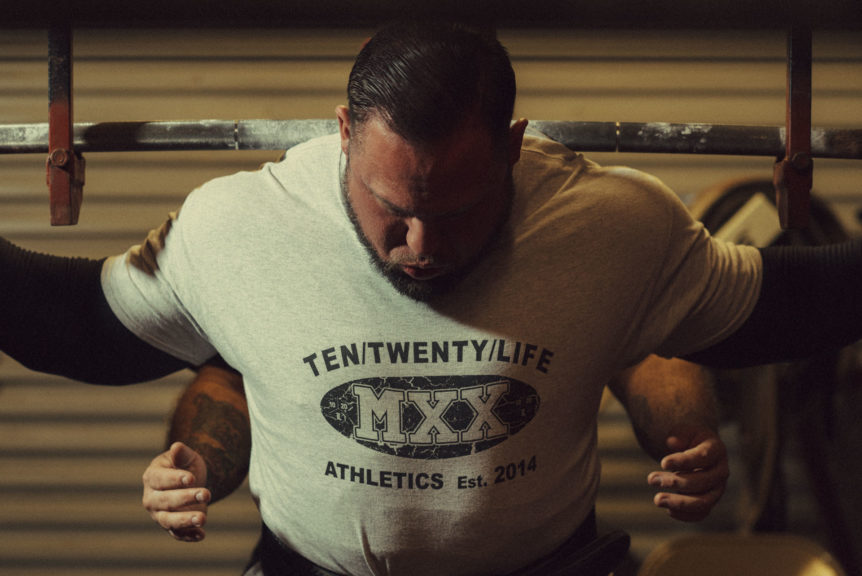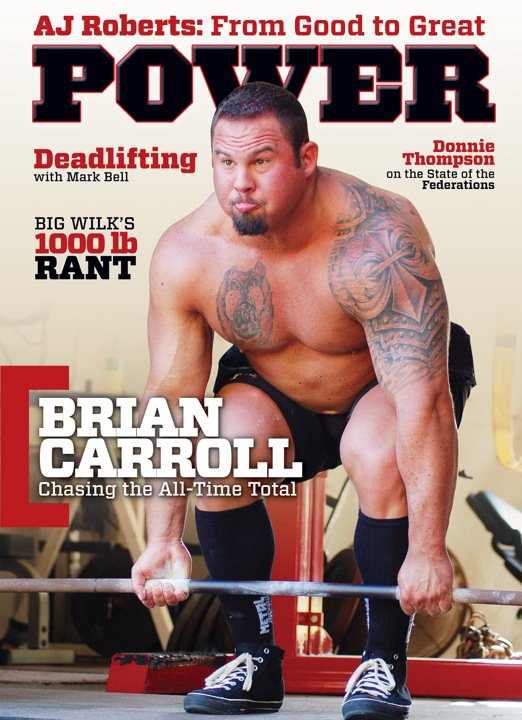
02 Apr Want a Big Bench? Get a Grip, BRO
By: Brian Carroll
Your grip is one of the most crucial, yet misunderstood, aspects of any big lift. Whether you’re squatting, bench pressing, deadlifting, rowing, or overhead pressing, you need a solid, sturdy grip on the bar for your reps to be performed correctly. If you’ve gone through a few cycles of 10/20/Life, you’ll also be handling some big-ass weights—and that entails knowing several important technical points most coaches and trainers seem to overlook.
KNOW YOUR FRAME: If you’re a super wide guy or girl, you’re naturally going to take a wider-than-normal grip, and vice-versa. Here, everything starts with the slit in the middle of the knurling toward the collar of the bar. If you’re narrow, grip the bar inside this point. If you’re wide, you’ll either be on this slit or wider.
Play around with this, but this point is where you’ll grip just about every lift, including your pull-ups.
One important thing to remember, no matter what type of frame you have, is that you should never use a false (suicide) grip for anything. When you’re trying to lift big weights, you want your grip to be white-knuckled so you can get the most neuromuscular recruitment possible with every rep. Wrap your thumb around your index finger, almost like you’re using a hook grip, but use your whole hand. Think of this entire arrangement as a “lobster claw” where you’re attacking the bar and locking onto it.
KNOW YOUR LEVERAGES: I just discussed what to do for your particular frame, but leverages in the big lifts are different for everyone. Maybe you have a small torso with very long arms—or a large torso with a whole T-Rex thing going on. Either way, you have to work with what you’ve been given.
For example, based on your frame, you may think you need to take a narrow grip, but if your arms are four feet long, you’re not going to press well if your grip is only 24 inches wide. At that point, you’re going to have to widen out. As always, start from the slit in the knurling, then work in or out from there.
ATTACK YOUR WEAK POINTS: This is one of the main strategies of 10/20/Life, and I address this in great detail in the book—but it can affect your grip as you develop, too. If you’re a lanky guy or girl, attack this weakness by filling out your frame. Thicken up your torso and limbs. Keep your main work—your squat, bench, and deadlift—in the most advantageous grip range possible, but you should also put yourself in different grips from time to time.
For example, for a guy with a skinny frame, long torso, lanky arms, and wide shoulders, here’s how I’d handle things:
1. Start with a medium grip for your main bench work.
2. After a few sets, transition to a closer grip (in about four inches per side). This will put you in a tough position, with a longer press, and it’ll really tax your triceps and pecs.
3. Finish off with more 10/20/Life-style triceps and chest work.
For your assistance work on bench day, dips will work your grip through a huge range of motion, working your upper body thoroughly. On your deadlift day, learn to lock your grip in with pull-ups and rows, using a narrow grip for a long range of motion. This will fill out your lats and rhomboids, and it’ll carry over to your bench, too.
Additional Points to Remember
Always chalk your hands, then line them up and squeeze the bar. Try to bend the bar as you’re benching, and don’t stop squeezing until it’s racked and you’re in a safe position. These steps will prep your body for the work to come, get your neuromuscular priming going, and save you a few painful trips to the dentist.
Have a plan every time you go to the gym. Don’t just walk in and do whatever you feel like doing that day. When you line up to grip the bar, you should have a rhythm and a checklist for every set—and this should always be the same.
To learn how to really get things done and get stronger than you’ve ever been in your life, check this out.
Brian Carroll
Latest posts by Brian Carroll (see all)
- Brian Carroll Coaches the Birddog - April 24, 2024
- Protected: -Header Image Post Template 2024 - April 18, 2024
- Brian Carroll X Professor Stu McGill full interview 2024 - April 16, 2024






Sorry, the comment form is closed at this time.